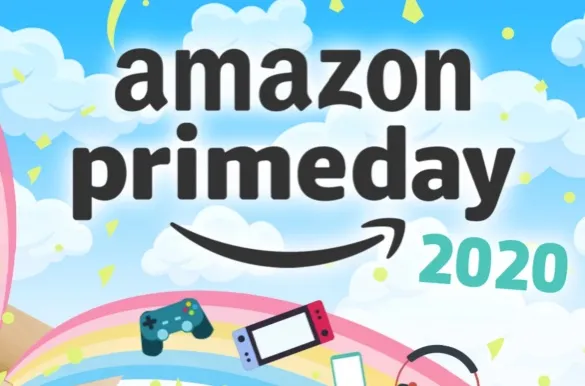Prime Day is going to look different this year.
While the actual date for Prime Day 2020 is still unknown, most brands are preparing for early-to-mid October. As such, Prime Day will “kick off” the holiday shopping season this year, and advertising strategies will have to be adjusted accordingly.
To start, keep this timeline in mind:
- NOW: Plan your Prime Day promotions, update your brand store, and begin awareness campaigns
- September 18: Amazon closes submissions for holiday promotions in Vendor Central
- Early / Mid-October: Prime Day
- Mid-October: Begin holiday deal promotion
- October 22: Cutoff date for vendor inbound shipping to Amazon fulfillment centers
- November 27: Black Friday (Many brick & mortar stores will be closed on Thanksgiving Day this year, including Walmart and Target.)
- November 30: Cyber Monday
Q4 Sales Are More Important Than Ever
Q4 is already a period where many brands traditionally generate a large portion of their sales. This year’s situation – lockdown, supply chain disruption, and restrictions on shipping at Amazon in the first half of the year – has made Q4 even more important for many brands.
This is especially true for non-essential brands that weren’t allowed to ship from Amazon during the beginning of lockdown. These brands are likely to be behind on sales for the year and need to get aggressive with their holiday promotion strategies.
However, even CPG brands, many of which were deemed essential by Amazon and saw a surge in online demand during the pandemic, are facing an important Q4, as consumers continue to flock to eCommerce. Maintaining market share and capturing new-to-brand consumers, in the middle of the holiday promotion whirlwind, will be no easy task.
Leading Up to Prime Day
Start to launch your paid search and display campaigns early to build up the relevance score for those campaigns. Without a strong relevance score, you will struggle to win ad placements regardless of your bid amount. Launching early will also give you plenty of time to test:
- Ad creative to find the highest click-through rate
- Product Detail Page copy to increase conversion rates
- Keyword targeting to maximize reach. Keep in mind that new online shoppers will likely have different behaviors than your typical customers. They may use search terms you’ve never considered.
- Audience segments in your display campaigns, not to mention your marketing strategy across social, email, and more. Start testing now to find the best drivers of traffic for Prime Day.
Audit your product pages and make sure they’re up to date and SEO friendly. Pay special attention to the long product description on your Amazon product page. Titles, bullets, and product descriptions are also important ones, but make sure to add pictures and videos (between 15 and 60 seconds) on all your product pages as well.
Lastly, be prepared and plan ahead for the extra demand on Prime Day. Have all your paperwork and approvals ready so that you can easily sign off on extra inventory or budget if the demand exceeds what you initially planned.
It’s also wise to have backup options for shipping. Consider partnering with a third-party provider like Flexe or Deliverr to fulfill some of your Prime shipping. Take the onboarding time with such a provider into consideration.
On Prime Day itself, have a plan and established budgets for the day to avoid overspending. Using Pacvue, you can set budget caps, dayparting to pace spend throughout the day, and receive alerts when campaigns run out of budget.
Prepare Your Deals
Amazon has updated their deal requirements for Q4 2020 to make it easier for brands to run deals on both Prime Day and for the holiday season.

One of the best ways to drive additional traffic to your deals is to use your brand store. Update your brand store for the holiday season, or create a specific sub-page for your “featured products.” You can begin to build awareness for your products prior to Prime Day. When the deal is live, be sure to include the deal widget on your brand page, and drive traffic from Sponsored Brand ads, display, and offline sources.
What to Do After Prime Day
Here are a few tips on how to handle the influx of new customers you are likely to generate after Prime Day:
- Cross-selling: offer deals on complementary products.
- Start your DSP retargeting campaigns right after Prime Day. Reduced brick & mortar traffic, as well as consumer uncertainty around shipping, means customers will start their holiday shopping sooner this year.
- Review performance (and shift budgets) more frequently, and don’t simply rely on benchmarks and strategy from last year. 2020 is anything but normal.
- Use Share of Voice to figure out your true eCommerce competitors. These can be quite different from your brick and mortar competitors, and tracking online Share of Voice can uncover unique conquesting opportunities for those not bidding on their brand terms.
- COVID-19 will inevitably affect the holiday season. There will likely be fewer big gatherings this year and less travel, so focus on promoting at-home needs for immediate families.
Being well prepared is key this Prime Day and Holiday season. It’s reasonable to expect that your spend will be higher this year, so be efficient with your budgets. Start your campaigns early to build up the relevance score and increase your chances of winning bids. Lastly, have a strategy for retargeting new customers to make the most of new online shoppers.
Prime Day is just the start of what’s sure to be a rollercoaster of a Q4 this year. Being agile and embracing budget fluidity to respond quickly to shifts in demand will be the path to success.













